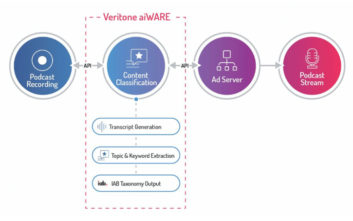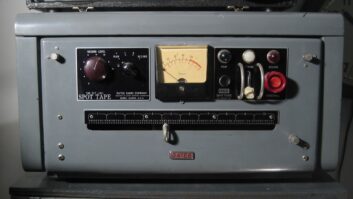 The author is managing director, Enterprise Radio Solutions, for Veritone. Radio World invites industry-oriented commentaries and responses. Send to Radio World.
The author is managing director, Enterprise Radio Solutions, for Veritone. Radio World invites industry-oriented commentaries and responses. Send to Radio World.
The plight of modern radio advertising can be summed up by a quote that’s more than 100 years old.
“Half the money I spend on advertising is wasted; the trouble is, I don’t know which half,” John Wanamaker, an early marketing pioneer and merchandising maven, once lamented.
Decades after Wanamaker’s merchandise empire became part of Macy’s, the struggle remains — advertisers are skeptical of the ROI of their radio spots. With no data-backed method of attributing leads or new traffic to a format like radio, advertisers have historically been unsure whether their investments are lost to the airwaves, while at the same time, almost every dollar spent and impression achieved on digital is measurable. Like Wanamaker, they’re stuck guessing how much budget is actually wasted.
[Read: ASR Is a Key Entry Point for AI]
But artificial intelligence technology is poised to redefine radio advertising ROI. By digitizing the airways and making content searchable, radio station advertising operations can finally give their clients the data they need to connect the dots on the ROI of their spend.
AI in Action on the Air
Rapid advances in speech-recognition and transcription have created opportunities for ad managers in the past. But a digital transcript does little to reveal value for advertisers on its own.
When we talk about AI in radio advertising, we’re looking at advanced applications that analyze and standardize transcript and programming data in near real-time — usually in the form of software or a cloud platform. Typically, these platforms also give ad managers a dashboard with a suite of tools to analyze placements — allowing them to break down ad attribution in new ways for existing clients and uncover opportunities to find new ones.
But the real power comes from directly attributing ad spend to website traffic. With AI enabled technology, advertisers can see when a radio spot or mention is driving people to their website — in real time. AI is the only reliably effective way to track and record both unscheduled live reads and organic mentions and report on their metrics. This level of depth can influence how advertising content is made and when it’s aired, and allow advertisers to test the effectiveness of these shifts in strategy.
AI Allows Ad Managers to Be More Savvy
AI isn’t a far flung concept in radio — many applications and use cases are already creating proactive and creative opportunities for radio advertising departments. Some examples of what’s possible include:
- Connecting to Client KPIs: Advertisers have their own internal business goals they’re trying to accomplish with a campaign, along with a set of metrics they use to measure success. AI applications can help prove the effectiveness of their placements toward these goals.
For example, AI along with website analytics can correlate traffic spikes to a client’s websites with the timing of an ad placement. Instead of the traditional estimated reach and value, it’s now possible to show how advertising spots and campaigns track with client goals.
-

How Veritone Attribute works. Click image to enlarge. Powering Earned Media Measurement: From host reads and testimonials to contests and promotions, radio has long been known for its ability to deliver creative and valuable advertising integrations beyond just a spot buy. As advertisers ask for more added value in today’s current economic climate, up until recently, earned media couldn’t effectively be measured. AI can detect these earned media integrations and automatically apply them to the delivery goals of the campaign in terms of placement, frequency and impressions delivered. This allows the earned media to be part of the advertiser’s ROI calculation so radio gets the full credit it deserves.
- Enabling More Strategic Placements: Advertisers are increasingly sensitive to where and when their ads appear, and AI can help promote contextual targeting and enhance brand safety. With the advent of digital audio and podcasting, many advertisers are purchasing digital audio ads programmatically and targeting based on a combination of first and third-party audience data.

Increasingly, advertisers also want to be associated with topics and content that are complementary to their brands and business –– for instance, a fitness center that wants to target episodic content focused on health and wellness. AI can automatically determine the prevalence of topics and keywords discussed in each episode, allowing an advertiser’s ads to be associated –– or disassociated –– accordingly.
AI is reshaping the way we talk about radio advertising ROI, and the discussion isn’t dealing in hypotheticals. AI applications in radio are already firmly in place at many stations across the country — are you prepared to keep pace?







